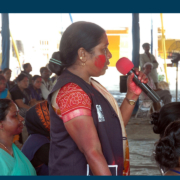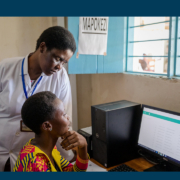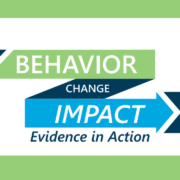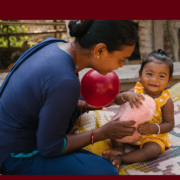Reducing Child Marriage: A Shared Goal for Breakthrough ACTION in Malawi and Nepal
Nepal and Malawi are continents apart, but both have high rates of child and early marriage. According to Girls Not Brides, a global network committed to ending child marriage, Malawi has the 11th highest rate of child marriage in the world, followed closely by Nepal in 16th place. In both countries, child marriage is illegal; however, it is still a common practice, with 42% of girls in Malawi and 41% of girls in Nepal marrying before the age of 18.
Breakthrough ACTION works in the Nepalese province of Madhesh where child, early, and forced marriage (CEFM) rates range from 58% to 83% for girls, and 12% to 40% for boys, according to a local census carried out in 2022. In Malawi, Breakthrough ACTION worked in Machinga and Chikwawa where there were 969 and 1,036 child marriages reported in each district respectively, according to a 2020 Ministry of Gender, Community Development, and Social Welfare report. However, these figures are thought to be low as many cases go unreported.
To reduce CEFM, both countries aim to strengthen the institutional and technical capacities of local government and stakeholders in social and behavior change with support from Breakthrough ACTION. The project’s work in Malawi, completed in November 2022, implemented activities directly to reduce CEFM. Breakthrough ACTION produced and aired radio programs and spots on local stations to promote children’s rights, responsible parenthood, and girls’ empowerment. The project produced six radio public service announcements that reached over 106,000 people ages 15 and older. The spots highlighted the effects of child marriage, men’s and chiefs’ roles in reducing child marriage, and children’s right to education. Over 300 child marriages were prevented and over 400 were annulled because of the community activities supported by the radio spots.
In Nepal, Breakthrough ACTION works directly with municipalities to strengthen their capacity to address CEFM. The project recently used a human-centered design approach to develop and test prototypes for reducing CEFM. The prototypes included:
- Creating local leadership support by engaging religious leaders, political party leaders, and municipality office leaders who collaborate and advocate to reduce CEFM in their communities
- Publicly acknowledging and congratulating parents and families that support their daughters’ desire to study, have a career, and delay marriage
- Incentivizing and supporting students through scholarships, especially for those who want to continue their studies
- Revitalizing support structures, such as the local child rights committees that lead efforts to reduce CEFM in close collaboration with municipality and ward offices
With Breakthrough ACTION’s assistance, the municipalities are also utilizing local media to promote their activities to reduce CEFM.
In addition to the work to strengthen social and behavior change capacity, both countries are empowering younger generations. Many children have returned to school to learn life skills, begin to build careers, and speak up for their rights. In Malawi, a 15-year-old girl from Machinga said, “I want to help other girls stay in school and complete their studies.” In Nepal, a 16-year-old girl from Durgabhagawati mentioned the scholarships that extend free schooling for grades 11 and 12 saying, “Neighboring women used to tell my mother to arrange my marriage. I wasn’t sure I could continue my education since my mother couldn’t afford it. But now, my hope has returned after receiving a scholarship to continue my education.”
By using social and behavior change, Breakthrough ACTION is helping make a difference in the lives of girls and boys in Malawi and Nepal…and around the world.

 Breakthrough ACTION
Breakthrough ACTION Gopal Bhattacharjee/Photoshare
Gopal Bhattacharjee/Photoshare 2019 CORE Group Global Health Practitioner Conference
2019 CORE Group Global Health Practitioner Conference Rachel Chilton/USAID/Flickr
Rachel Chilton/USAID/Flickr Photo credit: amy Rakotoniaina/PMI/Flickr
Photo credit: amy Rakotoniaina/PMI/Flickr
 Dave Cooper/USAID
Dave Cooper/USAID